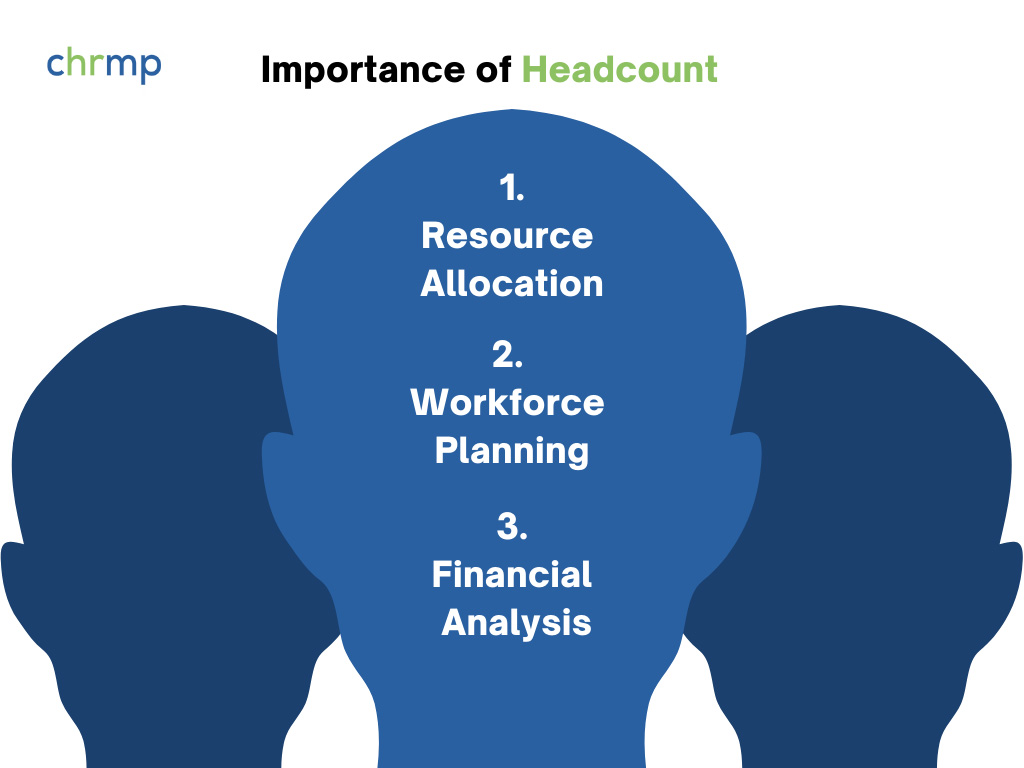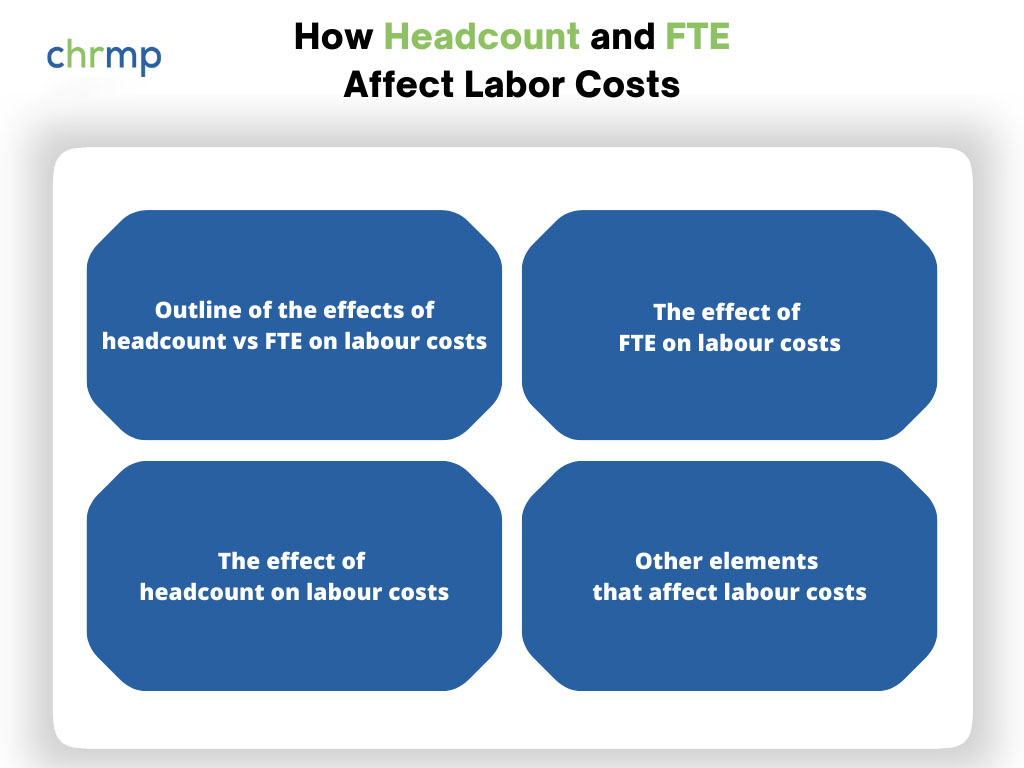

FTE vs headcount is two phrases that are frequently used in relation to managing workers and workforce numbers.
Although, at first sight, these concepts can appear to be synonymous, there are significant distinctions between them that are worth noting.
Full-Time Equivalent, or FTE, is a unit of measurement for an employee’s workload or weekly hours.
It is frequently applied to distribute various responsibilities within an organisation uniformly.
The entire number of firm employees, regardless of whether they work full- or part-time, is called headcount.
For several reasons, it’s crucial to understand FTE vs headcount.
Proper financial reporting is crucial since choosing one term over another might hurt the bottom line.
These words may also affect the calculation and distribution of employee benefits, impairing employee satisfaction.
In this blog article, we’ll examine FTE vs headcount and the circumstances under which either word could be more suitable.
You’ll comprehend these concepts better after this article and know how to apply them to your labour management.
The term “full-time equivalent” (FTE) refers to the number of hours a full-time employee would work in a certain time period as a representation of the workload of an employee.
Although it can be computed for shorter or longer periods, depending on the company’s needs, this is commonly done annually.
FTE, or Full-Time Equivalent, is a measure commonly used in workforce planning and management. It represents the number of hours worked by a full-time employee in a specified period, typically a week or a year.
FTE is important for several reasons:

1.Workforce Planning: FTE is crucial for estimating the number of employees required to meet the workload demands of an organization. By determining the number of FTEs needed, companies can effectively allocate resources, balance workloads, and ensure sufficient staffing levels to meet business objectives.
2. Budgeting and Cost Management: FTE plays a significant role in budgeting and cost management. By estimating the number of FTEs required for different departments or projects, organizations can calculate labor costs accurately, including salaries, benefits, and overhead expenses. This information helps in budget allocation and financial planning.
3. Performance Measurement: FTE is used as a baseline for measuring employee productivity and performance. By comparing the actual work hours of employees to the FTE target, organizations can evaluate individual and team performance, identify areas for improvement, and set benchmarks for productivity.
An organisation will divide the total number of hours worked by all workers by the equivalent number of full-time hours performed during the same period to determine FTE.
An employee might be regarded as 0.75 FTE, for instance, if they put in 30 hours per week, whereas a full-time worker puts in 40.
To assess how many workers a business needs to hire to satisfy its staffing needs, FTE is frequently used in budgeting and forecasting.
Also, since various benefits, like health insurance, are frequently offered per FTE, it is employed in benefit calculations.
To ensure that each employee is properly rewarded for their labour, FTE may be used to compare employee workloads across various departments or teams.
Overall, using FTE may help ensure that each employee is paid fairly by consistently quantifying individual workloads throughout a company.
Organisations may make better-educated judgements regarding their workforce numbers and financial requirements by comprehending FTE and its calculation.
The term “headcount” describes all the individuals a company employs, whether they are doing so full- or part-time.
It is a straightforward headcount of all employees, regardless of how much work they are doing.
Headcount refers to the total number of employees within an organization.
It is an important metric for several reasons:

1.Resource Allocation: Headcount provides a basis for resource allocation. By knowing the number of employees, organizations can allocate budgets, office space, equipment, and other resources accordingly. This helps ensure that the necessary resources are available to support the workforce effectively.
2. Workforce Planning: Headcount is vital for workforce planning and management. It helps organizations determine the optimal number of employees needed to meet operational requirements and achieve business goals. By analyzing headcount data, organizations can identify gaps in staffing levels, plan for future hiring needs, and manage talent acquisition and retention strategies.
3. Financial Analysis: Headcount is a key factor in financial analysis and budgeting. It directly impacts labor costs, including salaries, benefits, training expenses, and other employee-related costs. Tracking headcount allows organizations to accurately project and manage these costs, helping with financial planning and budgetary control.
It’s easy to calculate headcount; all you have to do is add up all the paid people.
This comprises both full-time and part-time workers, as well as contractors and independent contractors if they are a part of the workforce of the company.
Since it offers a straightforward measurement of an organisation’s personnel, headcount is frequently utilised in financial reporting and planning.
It may also be used to figure out things like the entire budget for personnel expenditures and the total cost of salaries and pay.
One significant distinction between headcount and FTE is that headcount ignores variations in employee workloads.
For instance, a full-time and part-time employee might count as one headcount while having quite different workloads.
Hence, headcount can be useful for determining the size of a company’s staff, but it might not give a clear picture of an employee’s workload or productivity.
In conclusion, headcount is a straightforward way to count all the individuals a company employs; it is important for budgeting and financial reporting.
It does not, however, account for variations in employee workloads, where FTE might be a more helpful metric.
FTE vs headcount differ primarily in that FTE considers an employee’s workload or the number of hours worked, whereas headcount only counts the number of employees.
Although headcount offers a straightforward way to gauge the size of an organisation’s workforce, FTE offers a standard approach to compare employee workloads across the board.
When a company wants to decide on personnel or calculate staffing requirements based on workload, FTE is frequently employed.
For instance, a company may use FTE to calculate the number of new hires necessary to satisfy its staffing requirements.
For figuring up employee benefits, such as health insurance, which may be offered on a per-FTE basis, FTE is frequently utilised.
On the other hand, headcount offers a straightforward way to determine the size of an organisation’s employees and is frequently used in financial reporting and planning.
The overall cost of salaries and wages and when reporting to external stakeholders like investors or governmental organisations, may be calculated using headcount.
The advantage of utilising FTE is that it gives you a consistent way to evaluate employee workloads and may help you ensure that everyone is getting paid fairly.
However, it can be trickier to figure out and might not give a full picture of a worker’s workload or productivity.
Contrarily, headcount can be easily calculated and accurately indicates the number of a company’s staff.
Unfortunately, it doesn’t offer data on the workloads of specific employees, which might make it more challenging to make wise hiring decisions.
Generally, both FTE and headcount have advantages and disadvantages, and which one should be used will depend on the particular requirements of a business.
Organisations may better judge their workforce demands and financial requirements by knowing the distinctions between these phrases and when to utilise them.

The labour expenditures of an organisation can be significantly impacted by both FTE and headcount.
It’s crucial to comprehend how different metrics of employee count might affect labour expenditures, which can account for a sizable amount of an organisation’s overall spending.
There are several ways that FTE might affect labour expenses.
FTE helps firms pay employees appropriately for the amount of work they are performing since it considers an employee’s workload.
FTE can affect overtime expenditures, too, as it considers the number of hours worked.
For instance, converting to full-time employees might raise labour expenses because of the increased overtime compensation if a company has many part-time workers who are barely eligible for overtime.
Differently from FTE, headcount might affect labour expenditures.
The price of employee benefits can be affected by headcount because it is only a count of all the employees. A larger headcount could increase healthcare expenditures, for instance, if a firm offers healthcare coverage based on the number of employees.
The price of hiring new staff and providing them with training can also be impacted by headcount.
It’s crucial to remember that several other elements besides headcount and FTE might affect labour expenses.
These can include factors like minimum wage regulations, the cost of living in various areas, and the degree of labour market rivalry in a particular industry.
In conclusion, there are a variety of ways that headcount and FTE might affect an organisation’s labour expenditures.
Making educated hiring decisions and planning for labour costs requires an understanding of these distinctions.
Organisations may make sure they are wisely choosing their labour expenditures by considering elements including workload, overtime expenses, employee perks, and other external considerations.
The nature of the company, its size, the sorts of personnel it manages, and its particular aims and objectives are just a few of the variables that will affect which resource management model is ideal for a certain corporation.
FTE vs headcount is two crucial employee count metrics that may be utilised to allocate resources efficiently.
When an employee’s workload varies, as it often does in fields where demand fluctuates seasonally or when shift work is common, FTE might be a more helpful metric.
For instance, FTE could be a better choice for managing resources in a hospital because the volume of patients and the workload of staff members might vary greatly based on the hour, day of the week, and season.
For businesses where the workload of employees is fairly constant or where labour expenses are the main issue, headcount can be a more suitable metric.
For a manufacturing organisation, for instance, when labour expenses are the main issue, and the production schedule is predictable, headcount may be more suited.
The ideal resource management strategy will ultimately depend on the particular requirements and objectives of the firm.
To guarantee that the calculations are correct, it is crucial to take into account the variables being measured and to employ trustworthy formulae and techniques.
Organisations may successfully utilise their labour resources by knowing the distinctions between FTE vs headcount and how they may affect staffing decisions and labour expenditures.
Converting Full-Time Equivalents (FTEs) to headcount involves estimating the number of actual employees needed to fulfill the FTE requirements. This conversion can vary depending on factors such as the average hours worked by part-time employees and the specific work arrangements within the organization. Here’s a general approach to converting FTEs to headcount:
Determine the FTE calculation basis: FTEs are typically based on a full-time workweek or year, usually 40 hours per week or 2,080 hours per year. Ensure that you have a clear understanding of the FTE calculation basis being used in your organization.
Calculate the FTEs: Calculate the FTEs for each employee by dividing their actual hours worked by the standard full-time hours. For example, if an employee works 30 hours per week, their FTE calculation would be 30 divided by 40 (assuming a 40-hour workweek) = 0.75 FTE.
Determine the average FTE per employee: Calculate the average FTE per employee by summing up the FTEs of all employees and dividing it by the total number of employees. This will give you an average FTE value.
Convert FTEs to headcount: To convert FTEs to headcount, divide the total FTEs by the average FTE per employee. Round the result to the nearest whole number to obtain the approximate headcount.
It’s important to note that this conversion is an approximation and may not account for factors such as part-time employees with varying hours or other workforce complexities. Adjustments may be necessary based on the specific circumstances of your organization.
FTE vs headcount is two crucial employee count metrics that are used in businesses to determine staffing needs and labour expenditures.
Although headcount just measures the number of employees, FTE accounts for an employee’s workload.
Given that they may significantly affect an organisation’s labour expenses and overall staffing decisions, it is crucial to grasp the distinctions between these two metrics.
For the purpose of budgeting for labour costs and making informed staffing decisions, accurate FTE and headcount figures are essential.
FTE vs headcount can be calculated manually or with the use of software tools, but in order to guarantee that the calculations are accurate, it’s crucial to understand the formulae used for each and the parameters being assessed.
To sum up, FTE vs headcount are both significant measurements of the number of employees that firms use to determine staffing needs and labour expenses.
Organisations may choose their workforce wisely and make sure that their labour resources are allocated efficiently by knowing the distinctions between these two indicators and how they affect labour expenses.
Making these informed decisions requires precise FTE and headcount estimates. Thus businesses should be careful to employ trustworthy formulae and technologies to guarantee the accuracy of their calculations.
To know more about FTE vs Headcount, visit chrmp.com
1. What distinguishes an FTE from a headcount?
Although headcount just measures the number of employees, FTE accounts for an employee’s workload. Although headcount is simply the total number of employees in a company, full-time equivalents (FTEs) are derived by dividing the sum of all employees’ hours worked by the sum of hours in a full-time workweek or month.
2. When should I count people by headcount rather than by FTE?
Depending on the demands of the company, numerous uses for FTE vs headcount may exist. Although headcount is used to gauge the size of the workforce, FTE is often used to gauge employee workload. FTE may be helpful when deciding on personnel numbers and workload allocation, whereas headcount may be helpful for figuring out labour expenses and other budgetary considerations.
3. Is FTE a more accurate metric than headcount?
Headcount and FTE aren’t inherently “better” measures; they just have different uses. While headcount may be more beneficial for determining labour expenditures and budgetary needs, FTE may be a better way to gauge employee workload. The organisation’s demands and objectives will determine which metric should be used.
4. What elements should I take into account while figuring out FTE and headcount?
To guarantee that FTE and headcount calculations are correct, it’s crucial to take into account the precise variables being measured and to employ trusted formulae and methods. The number of hours worked, the proportion of full-time and part-time personnel, and the duration of the measuring period are all possible considerations.
5. Can FTE and headcount calculations be made using digital tools?
The process of figuring out FTE and headcount may be automated thanks to a variety of software solutions that are readily available. Making knowledgeable staffing decisions and keeping track of changes in the size of the workforce can be facilitated by these technologies. For determining FTE vs headcount, software tools like Excel, Google Sheets, and specialist HR software are some examples.
© 2007-2025 CHRMP| All Rights Reserved | Powered by Ripples Learning & Research Private Limited
